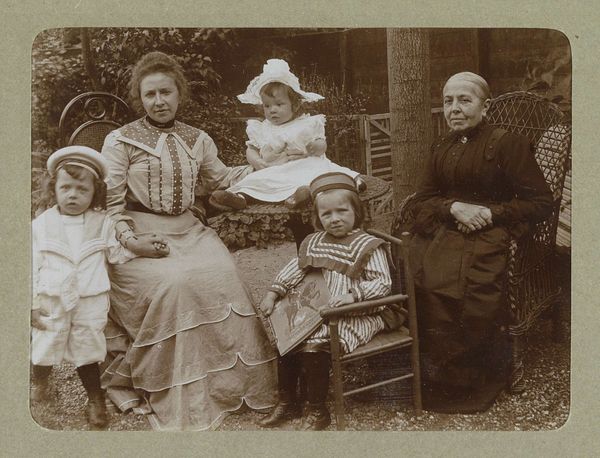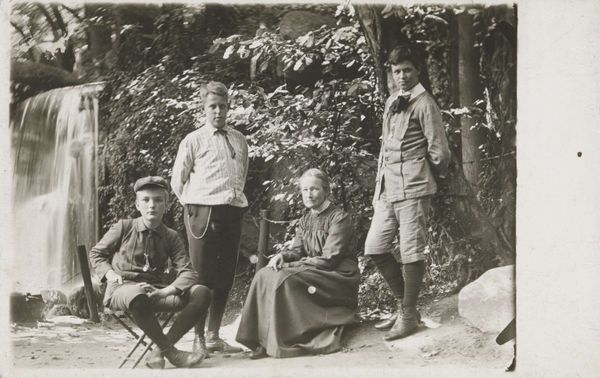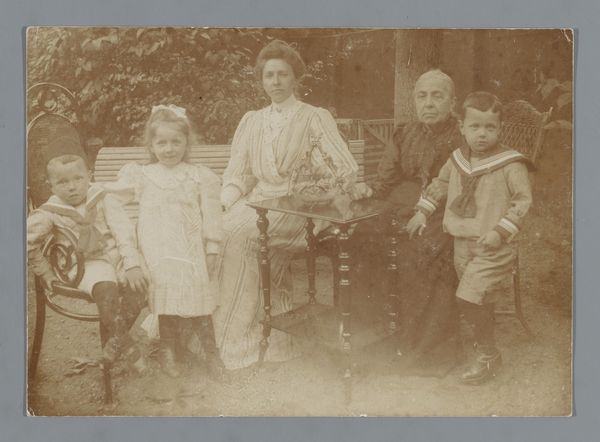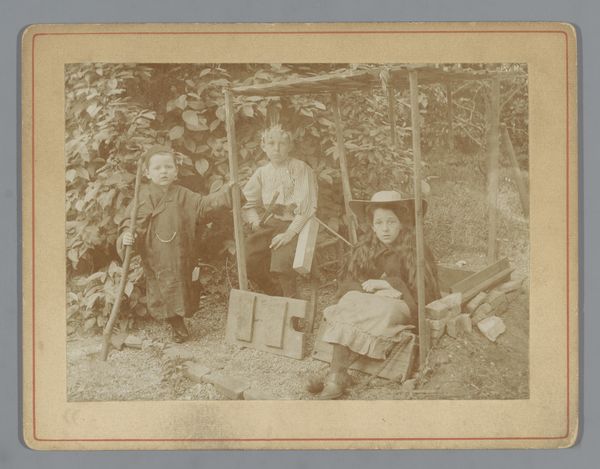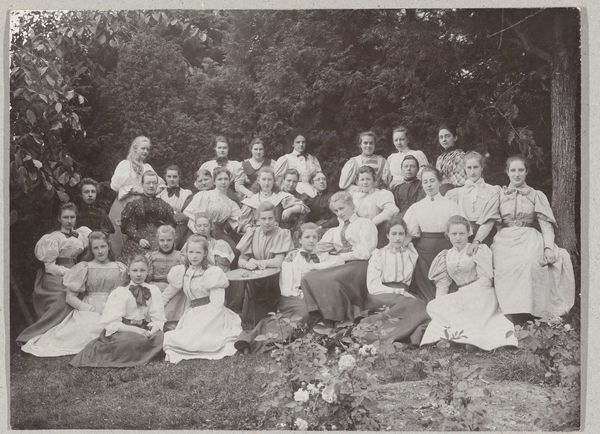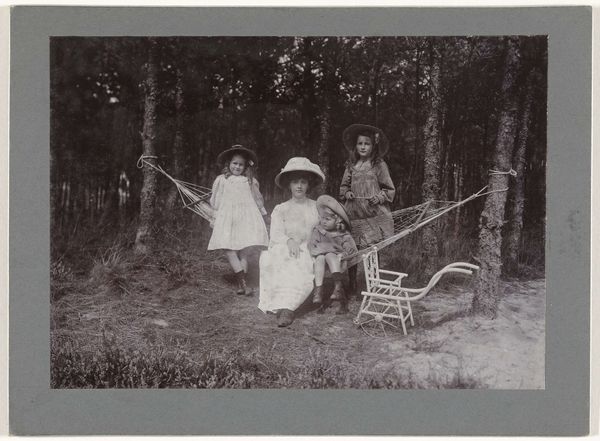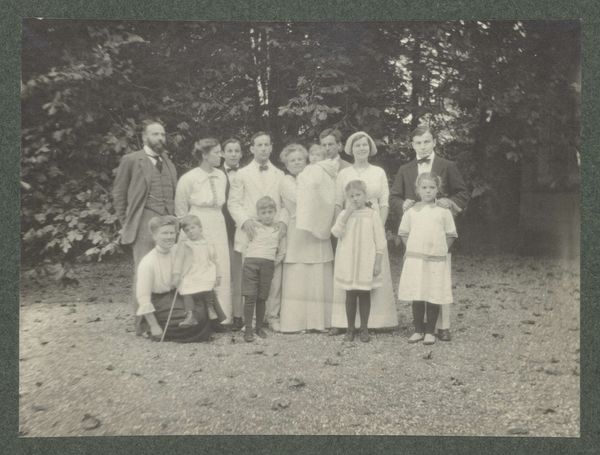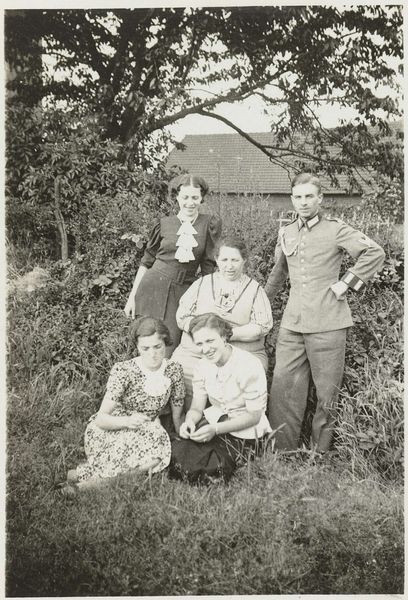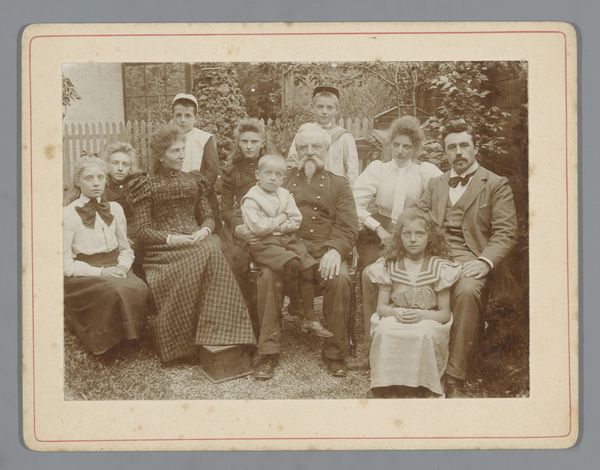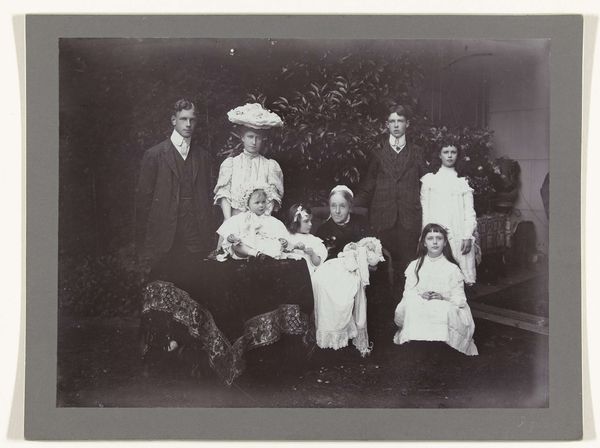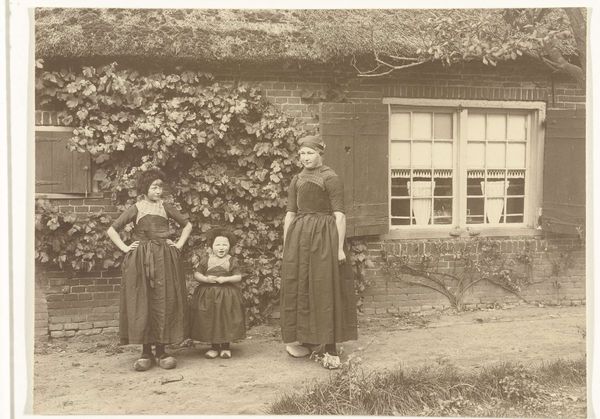
Untitled (Flora, Elizabeth, Howard & Kitty in Lake George field) 1903 - 1905
0:00
0:00
photography, glass
#
wedding photograph
#
photo restoration
#
wedding photography
#
charcoal drawing
#
archive photography
#
photography
#
glass
#
historical photography
#
portrait reference
#
strong emotion
#
old-timey
#
19th century
#
united-states
Dimensions: 3 1/4 × 4 in.
Copyright: Public Domain
Curator: This captivating image is titled "Untitled (Flora, Elizabeth, Howard & Kitty in Lake George field)," captured by Alfred Stieglitz sometime between 1903 and 1905. It is part of the Art Institute of Chicago's collection and employs a photographic glass medium. Editor: My first impression? Nostalgic, undeniably. The monochromatic tones evoke a bygone era, a dreamy pastoral quality further enhanced by the children’s poses and the diffused light. There's a clear emphasis on texture in the grass, which contrasts with the relative smoothness of the figures’ clothing. Curator: Absolutely. Stieglitz was pivotal in establishing photography as a fine art form, pushing against the traditional academic art world. Works like this demonstrate his desire to capture the realities of American life. The family dynamic here hints at social structures of the time, where leisure and rural escapes were signs of privilege. Editor: Observe the composition. It isn’t simply a documentary snapshot. The children aren't placed in the center. Rather, Stieglitz balances them within the field, creating layers. Note the use of the shallow depth of field—softening the background to draw focus to the subjects and to their interconnectedness as a group, physically represented by how they're gently holding onto one another. Curator: Precisely, Stieglitz moved within influential social circles. His work was exhibited in the New York Camera Club. Images like this are crucial for us because they aren’t merely artworks but also historical documents reflecting social norms and aesthetic values during the turn of the century. They capture that complex interplay. Editor: I see a story written in light and shade. The children’s gazes, some direct, some averted, suggest a range of emotions—innocence, curiosity, perhaps a hint of weariness. And their old-timey clothing helps highlight how time renders objects quaint while imbuing memories with the warm amber of a historical past. Curator: Reflecting on it, this image encourages a rich understanding of historical American portraiture, and demonstrates how photography has mirrored society for well over a century, offering invaluable insights. Editor: Indeed. It prompts us to think about how photographic representation shapes not just the art world but cultural perceptions too.
Comments
No comments
Be the first to comment and join the conversation on the ultimate creative platform.
